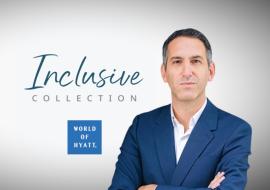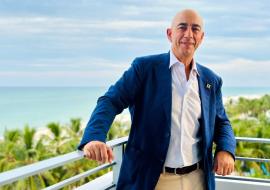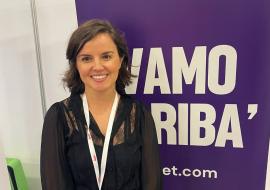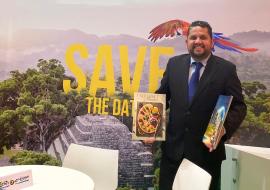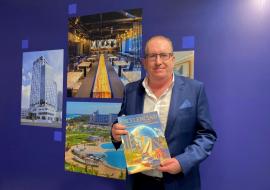Q & A with Jose Arriola, Director-General of Pullmantur
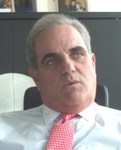

by Jose Carlos de Santiago
A little longer than six months after taking over as director-general of Pullmantur, Jose Arriola talked exclusively with Caribbean News Digital newsletter about the company’s changes, results and perspectives under his leadership and new working style.
Q.- ¿How do you consider this particular market has evolved? I mean, the new policy the company has implemented, the strategic changes toward the new destinations and the new fleet. ¿What do you make of the Spanish market and how is it really faring right now?
A.- We’re deploying liners across the Caribbean this year, off from Barcelona, plus another ship in Istanbul, another one in Greece and a fourth one in the Baltic. Nearly all of them are sold out and we’re looking for an alternative fixed vessel for Acapulco in November. The big shakeup for this wintertime season is our deployment in Brazil, the Caribbean, Argentina and Mexico –a schedule that’s quite different to what we used to do in the past for this time of year. We’ll count on the Empress of the Seas and the Ocean Dreams beginning this week. We hope to get a new liner next year; we’re almost certain that’s about to happen.
Q.- Are they liners built for 1,800 to 2,000 passengers each?
A.- The one coming in November, the Sovereign of the Seas, carries 2,600 passengers. That’s the largest we have now.
Q.- Where are you going to homeport it?
A.- Eventfully, this ship will be homeported in Barcelona. One of the ships there, carrying 1,100 passengers, will sail to Valencia and will stay there all year round, and one now homeported in Barcelona will sail to Mexico all year round. The latter carries 996 passengers.
Q.- Are you planning to implement any new marketing strategy for those liners?
A.- The new promotional campaign labels Pullmantur as “the cruise company with a Spanish soul,” based on the fact that we’re a Spanish company serving Spanish cuisine, products and traditions. In a word, a completely Spanish offer.
Q.- How many planes does the company have right now?
A.- We have a couple of 737-300 airliners, plus a 747-400 aircraft coming in next week. We have ordered a couple of aircraft that will be coming to us as soon as possible. Air transportation is a key player in a company like this. Our passenger volumes, especially in the Caribbean, compel us to count on our own airlift service. This is the model we have worked on and the one we’ll put our smart money on in the future.
Q.- Will you keep the same routes toward the Caribbean?
A.- For the first time we’re putting flights to Margarita Island in Venezuela, charter flights with booked hotels there. That depends on the aircraft. We’re toying with the possibility of making charter flights to Buenos Aires if we happened to have a cruise liner in Buenos Aires. We’re also considering the options of flying to Orlando in the summer.
Q.- What about Aruba as a destination?
A.- Excellent. We’re very pleased with Aruba’s development in that sense.
Q.- As far as distribution is concerned, your company used to do business with the Marsans Group for the sale of its products. It was quite revolutionary to hear that Travelplan was also going to start selling this cruise. What other companies or groups are you opening up to?
A.- We’ve opened up to all groups. In Spain, Marsans takes up 20 percent of our sales, though it used to be as large as 70 percent in the past. We’ve really opened up to all groups, so everybody can now have a piece of this market pie.
Q.- The company’s commercial layout has changed as well, hasn’t it?
A.- Absolutely. We now have a new marketing director –Bernardo Echevarria- who served for American Airlines for a mighty long time. He then moved to Royal Caribbean before setting up his own business back in 2002. He’s from Spain and used to have many businesses in France. He’s certainly going to be a great help to us in the French market.
Q.- Is the company planning to open new offices?
A.- We’ll keep the Barcelona office running, as well as the one in Valencia. We want to strengthen our other offices in the larger territories.
Q.- Any plans to introduce changes in the communications and publicity agency?
A.- No, we haven’t thought about that.
Q.- Pullmantur used to have different departments, including a tour operator that acted like a cluster agency for cruises. How is the Pullmantur’s tour operator going to be like right now?
A.- We have reclassified it into four products: one for cruises, one for charter flights, one for aviation and a fourth one for European circuits. These are four divisions that also operate together as a whole, yet they work as separate dependencies.
Q.- Will you cut some kind of deal with the Orizonia Group or are you planning to work with it separately?
A.- We’re juggling a few hats with them.
Q.- What do you make of the competition staged by Orizonia?
A.- The market is large enough for everyone, yet the idea of competing in the same territory is not that wise. There’s plenty of room for everyone. We’ve talked about joint collaborations, a working plan that makes sense for the two of us, so we’re working on that right now.
Q.- How long do you believe the Pullmantur-Royal Caribbean conversion is going to take?
A.- We’ve just begun, so I guess the final conversion will be coming somewhere in the summer. It’s going to be a very transparent process at the end of the day. We’re still working out a few kinks in the system, things that need to fit in much better, so I hope the whole process will be over by June.
Q.- Has Royal Caribbean earmarked a specific budget for getting this process going?
A.- We’ve spent a fortune. But the good thing about Royal Caribbean is that this company wants to make everything perfect this year and they pull no punches in this effort. They’ve put no cap on the amount of money that can be spent on the conversion process. And a matter of fact, that conversion hasn’t been easy at all. It’s been tough, for example, in the automation systems because the conversion from English into Spanish has been difficult, sometimes painful, if you don’t mind my saying. However, we’re just about to conclude this part, so that’s why I say June could be the deadline, the month in which nearly everything will be converted.
Q.- There are two major cruise companies in the world and the two of them have entered the Spanish market. Do you think the European market, no matter how high or low the greenback might be, could be as hefty as the U.S. market is in Latin America and the Caribbean?
A.- The U.S. market is pretty strong, but make no mistakes about it; just as we opened a specific brand in France, we’re now opening other brands in Mexico and Brazil, and we’re bound to do our best in dominating the Latin American market in Spain. The market share is large, not as large as the U.S. market, of course, but it’s always going to be a major market.
Q.- There’s a number of emerging markets in Europe, very strong markets, that could be used for cruise deployments in both Europe and the Americas. However, neither Carnival nor Royal Caribbean have direct access to such markets as Russia or Ukraine. What do you have to say about that?
A.- Those are very interesting markets. We’ve got plans to homeport a vessel in Istanbul later this year, in the winter, in a bid to further lure the Eastern Europe market. We want to give it a try because it looks fine.
Q.- Are you planning to come back to the U.S.?
A.- Well, I have a few options. Maybe I’ll go to New York for a year to work for another company facing similar problems right now. That company is looking for someone to work things out. I could also stay at Royal Caribbean as a consultant, or perhaps I’ll do nothing at all because I’m about to be 61 years old next month and I want to enjoy my retirement plan that kicked off back in 2001 –even though I’ve never had it indeed.







